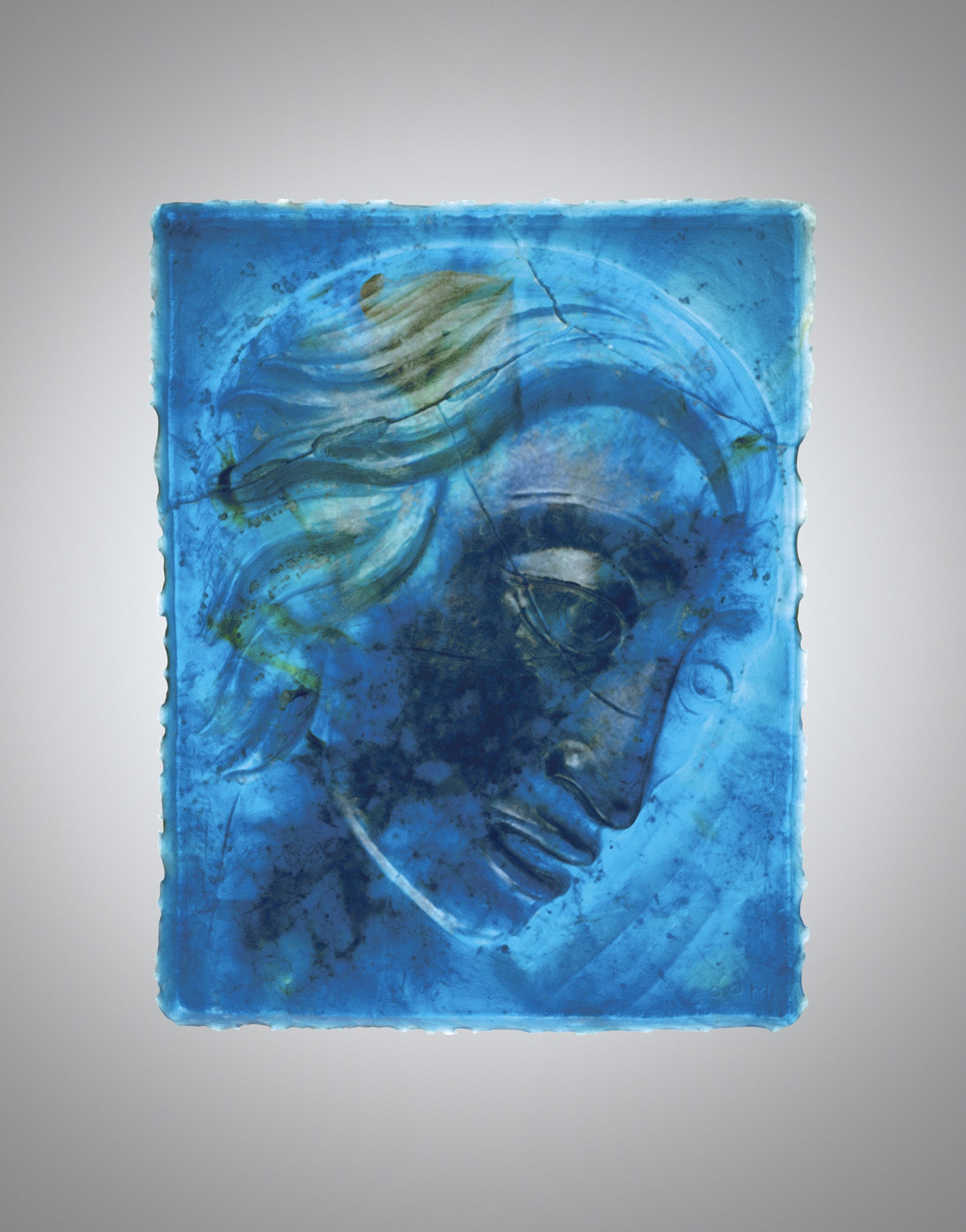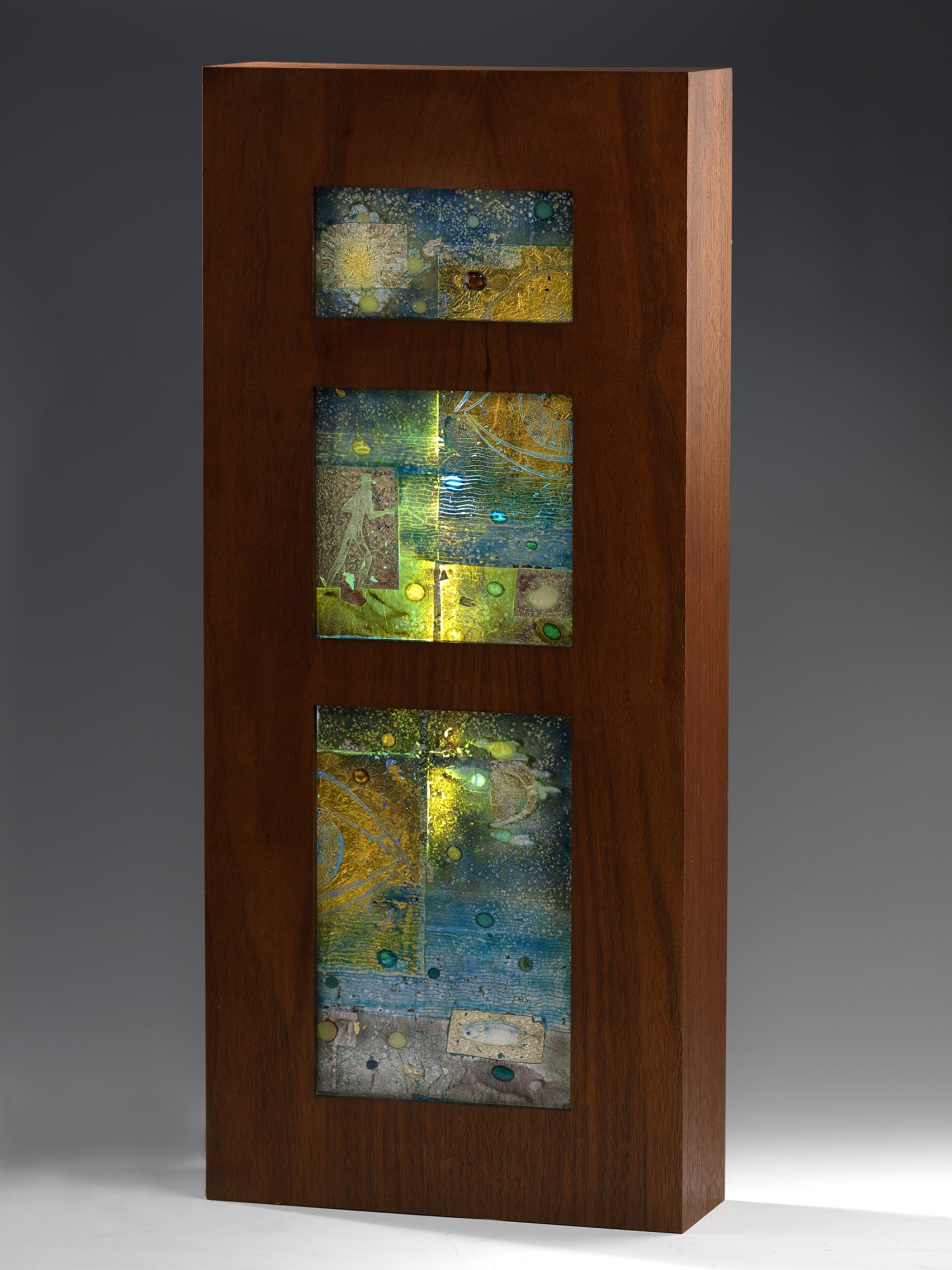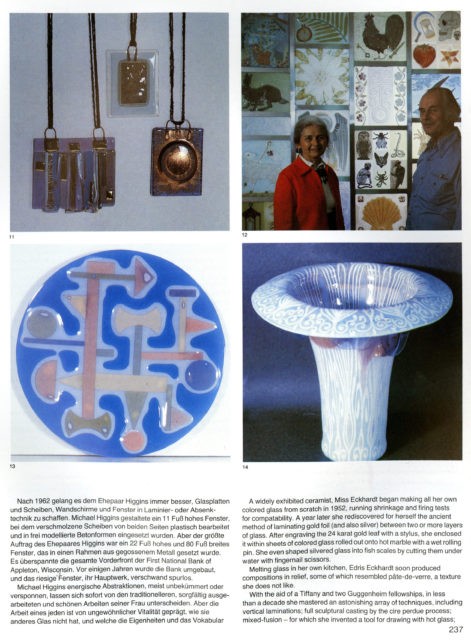Edris Eckhardt
American artist Edris Eckhardt (1905–1998) is known internationally for her sculptural work in ceramics, glass, and bronze. She studied painting and sculpture at the Cleveland School of Art (CSA, later Cleveland Institute of Art) and worked at Cowan Pottery before returning to the CSA to teach ceramics—and later, enamel and glass—from 1933 to 1971. From 1935 to 1941, Eckhardt also was head of Cleveland’s sculpture division in the Works Progress Administration’s Public Works Arts Project. Eckhardt began working in glass in the 1950s. She rediscovered ancient Egyptian methods of enclosing gold foil between glass layers and developed many innovative new techniques, including a method for combing glass and bronze in cast sculpture.
Works

Wonder, 1982. Overall H: 51.6 cm, W: 10.3 cm, D: 10.2 cm. Collection of The Corning Museum of Glass, Corning, New York. Gift of Heinz K. and Elizabeth H. Wolf (2008.4.30).

Archangel Uriel, 1968. Overall H: 25.2 cm, W: 20.5 cm. Collection of The Corning Museum of Glass, Corning, New York. Gift of the artist (68.4.28).

Dream Sequence, 1974. Gold, silver foil, glass, wood and functional light bulb. H: 24.625 in, W: 10.875 in, D: 3.5 in. Collection of the Smithsonian American Art Museum, Gift of Dr. Paul A. Nelson in honor of Henry and Lillian Steinberg. (1984.136.1).
Bibliography

“USA Studio Glass vor 1962 / before 1962: Maurice Heaton, Frances and Michael Higgins, Edris Eckhardt, Vier Pioniere und Wegbereiter / Four Pioneers and True Originals.” Neues Glas, no. 4 (October/December 1985): 232–40.